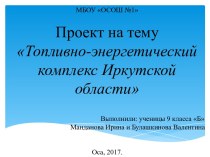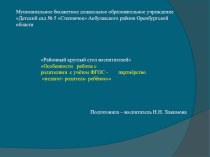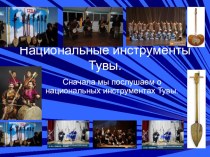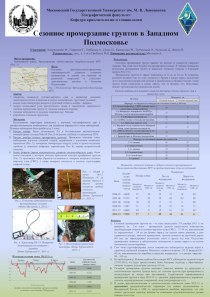- Главная
- Разное
- Бизнес и предпринимательство
- Образование
- Развлечения
- Государство
- Спорт
- Графика
- Культурология
- Еда и кулинария
- Лингвистика
- Религиоведение
- Черчение
- Физкультура
- ИЗО
- Психология
- Социология
- Английский язык
- Астрономия
- Алгебра
- Биология
- География
- Геометрия
- Детские презентации
- Информатика
- История
- Литература
- Маркетинг
- Математика
- Медицина
- Менеджмент
- Музыка
- МХК
- Немецкий язык
- ОБЖ
- Обществознание
- Окружающий мир
- Педагогика
- Русский язык
- Технология
- Физика
- Философия
- Химия
- Шаблоны, картинки для презентаций
- Экология
- Экономика
- Юриспруденция
Что такое findslide.org?
FindSlide.org - это сайт презентаций, докладов, шаблонов в формате PowerPoint.
Обратная связь
Email: Нажмите что бы посмотреть
Презентация на тему Time-space compression
Содержание
- 2. PlanDefinition of this term.Time-space compression in general.Criticism.Conclusions.Used sources & references.
- 3. Definition of this termTime–space compression (also known as space–time
- 4. Definition of this termDefine space time compression
- 5. Time-space compression in generalAccording to theorists like Paul
- 6. Time-space compression in generalTheorists generally identify two
- 7. CriticismFor Moishe Postone, Harvey's treatment of space-time
- 8. ConclusionsThe term “space-time compression” was coined by
- 9. Used sources & referencesDavid Harvey - The Condition of
- 10. Скачать презентацию
- 11. Похожие презентации
PlanDefinition of this term.Time-space compression in general.Criticism.Conclusions.Used sources & references.
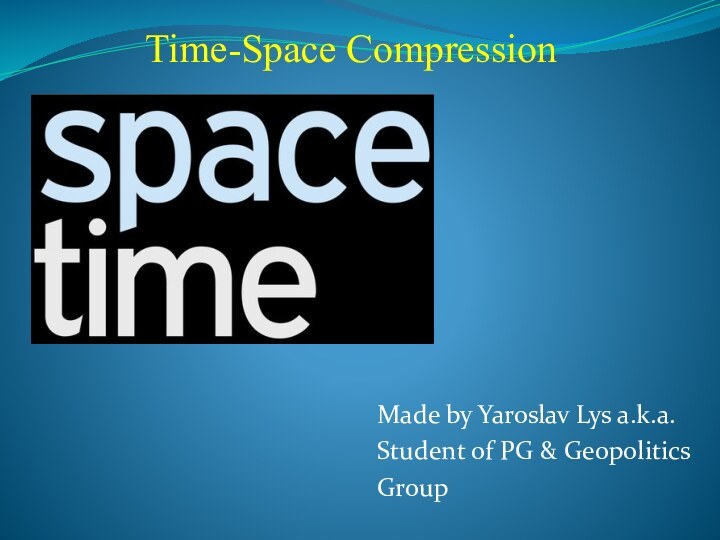
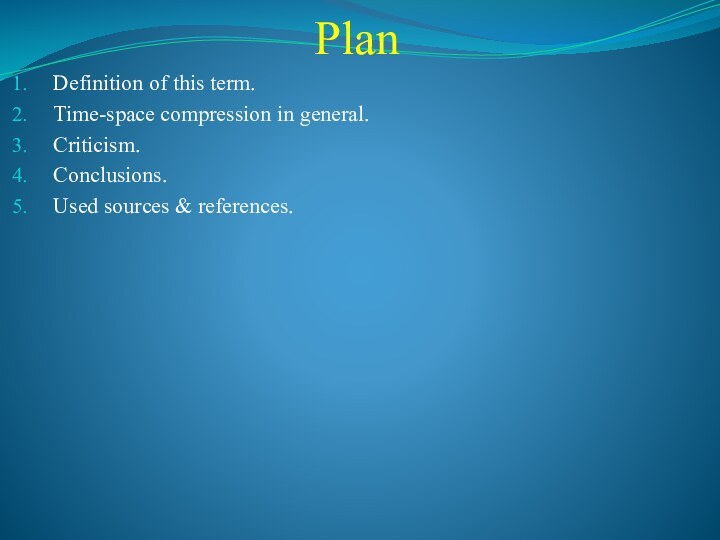





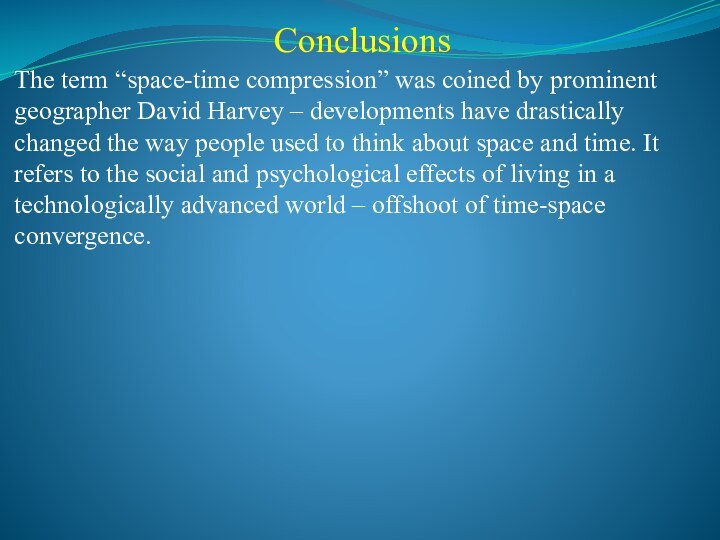
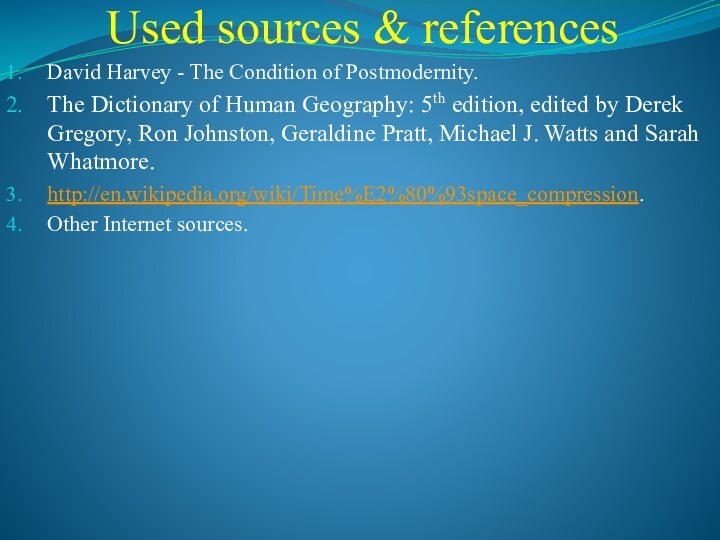
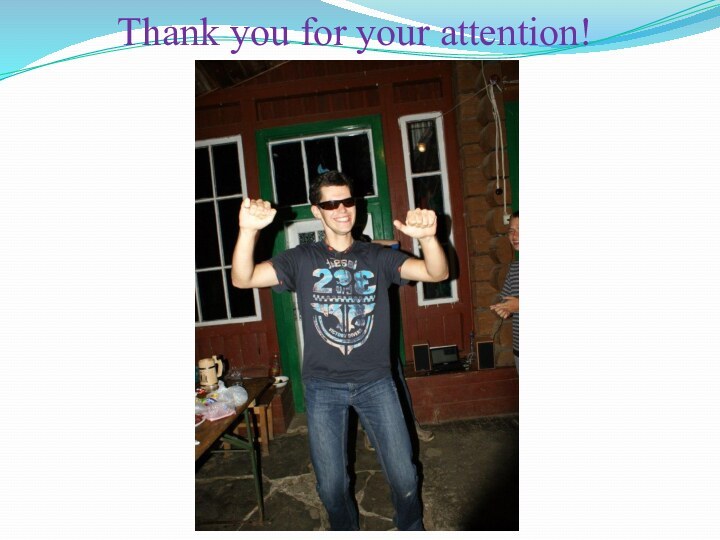
Слайд 2
Plan
Definition of this term.
Time-space compression in general.
Criticism.
Conclusions.
Used sources
& references.
Слайд 3
Definition of this term
Time–space compression (also known as space–time compression and time–space
distantiation), first articulated in 1989 by geographer David Harvey in The Condition
of Postmodernity, refers to any phenomenon that alters the qualities of and relationship between space and time.It’s an increase in the
speed of social life and a diminution in the
constraining effects of distance on human activities.
Time–space compression often occurs as a result of technological innovations that condense or elide spatial and temporal distances, including technologies of communication (telegraph, telephones, fax machines, Internet), travel (rail, cars, trains, jets), and economics (the need to overcome spatial barriers, open up new markets, speed up production cycles, and reduce the turnover time of capital).
David Harvey bets you don’t know exactly what does “space-time compression” mean.
Слайд 4
Definition of this term
Define space time compression relating
it to technological innovations. Space time compression is the
increasing sense of connectivity that seems to be bringing people closer together even thought their distances are the same. Space time compression is the solution to distance decay because technology (internet, cell phones) is allowing us to communicate more across longer distances.Processes of this kind have a long and
varied history, but when David Harvey
(1989) first proposed the term, his primary purpose was to designate the product of what Marx saw as the compulsion to ‘annihilate space by time’ under capitalism.
Слайд 5
Time-space compression in general
According to theorists like Paul Virilio,
time-space compression is an essential facet of contemporary life.
Virilio also uses the term dromology to describe “speed-space“.Doreen Massey maintains this idea about time-space compression in her discussion of globalization and its effect on our society. Similar to Virilio, she states that because our world is "speeding up" and "spreading out", time-space compression is more prevalent than ever as internationalization takes place. Cultures and communities are merged during time-space compression due to rapid growth and change, as "layers upon layers" of histories fuse together to shift our ideas of what the identity of a "place" should be.
Слайд 6
Time-space compression in general
Theorists generally identify two historical
periods in which time–space compression occurred; the period from
the mid-19th century to the beginnings of the First World War, and the end of the 20th century. In both of these time periods, according to Jon May and Nigel Thrift, “there occurred a radical restructuring in the nature and experience of both time and space ... both periods saw a significant acceleration in the pace of life concomitant with a dissolution or collapse of traditional spatial co-ordinates“.
Слайд 7
Criticism
For Moishe Postone, Harvey's treatment of space-time compression
and postmodern diversity are as merely reactions to capitalism.
Hence Harvey's analysis remains "extrinsic to the social forms expressed" by the deep structure concepts of capital, value and the commodity.For Postone the postmodern moment is not necessarily just a one-sided effect of the contemporary form of capitalism but can also be seen as having an emancipatory side if it happened to be part of a post-capitalism. And because postmodernism usually neglects its own context of embeddedness it can legitimate capitalism as postmodern, whereas at the level of deep structure it may in fact be more concentrated, with large capitals that, accumulate rather than diverge, and with an expansion of commodification niches with fewer buyers.
Postone asserts one cannot step outside capitalism and declare it a pure evil, or as a one-dimensional badness. For Postone, the emancipatory content of such things as equal distribution or diversity are potentials of capitalism itself in its abundant and diverse productive powers. It misfires however, when a form of life such as postmodernism takes itself for being the whole when in fact it is just another appearance of the same capitalist essence.
Слайд 8
Conclusions
The term “space-time compression” was coined by prominent
geographer David Harvey – developments have drastically changed the
way people used to think about space and time. It refers to the social and psychological effects of living in a technologically advanced world – offshoot of time-space convergence.
Слайд 9
Used sources & references
David Harvey - The Condition of Postmodernity.
The
Dictionary of Human Geography: 5th edition, edited by Derek
Gregory, Ron Johnston, Geraldine Pratt, Michael J. Watts and Sarah Whatmore.http://en.wikipedia.org/wiki/Time%E2%80%93space_compression.
Other Internet sources.


